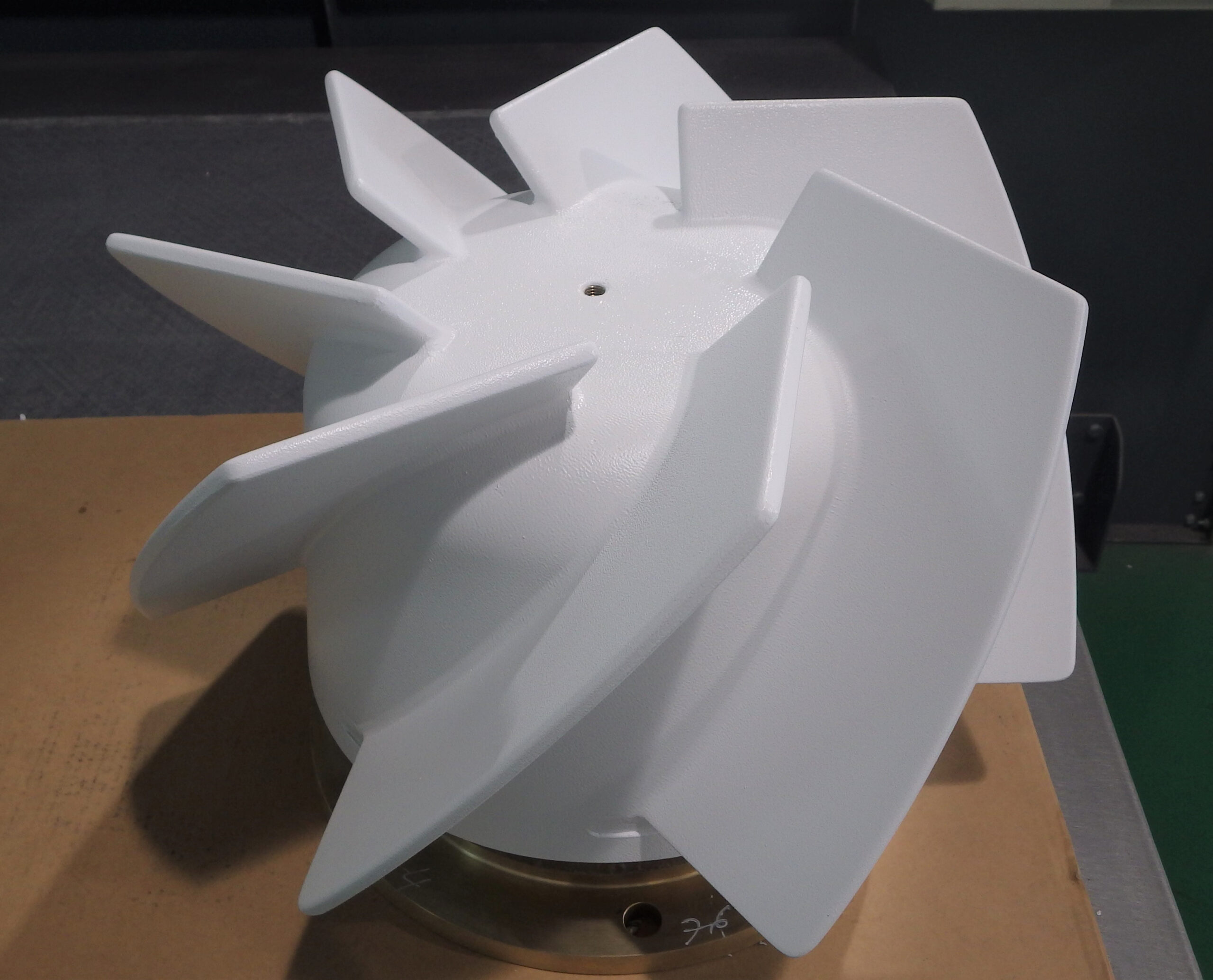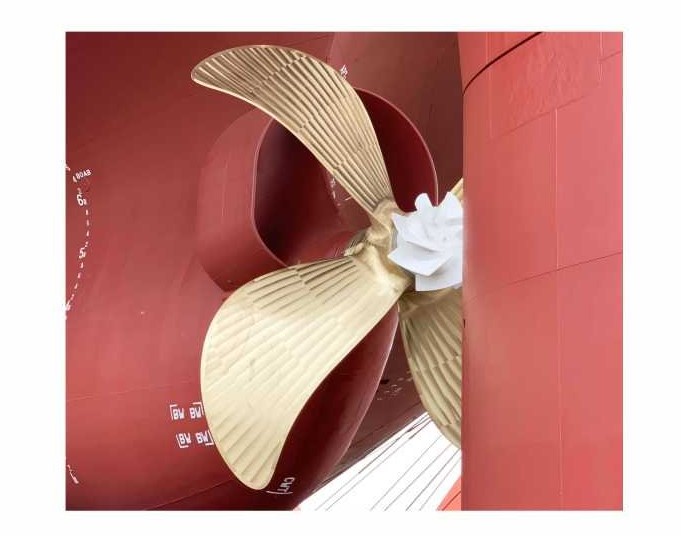Our service provides a wide range of energy-saving solutions from design to manufacture of energy-saving devices suitable for each hull configuration such as : CFD-Optimal in hull design, ESD products such as Ultimate rudder Bulb, Neighbor Duct & Eco-Cap ….which can save up to 6.2% of fuel

Eco Cap
Saving energy 1- 3%
The Eco-cap is designed to prevent vortices that originate at the roots of the blades of the propeller from concentrating at the end of the cap. The device suppresses the generation of a negative pressure region at the rear of the cap and reduces the resistance at the rear end of the cap, thereby improving energy efficiency. Although the cap body is made of NAB, the fins are made of FRP, and the fins have low resistance because of the thin blades. In addition, the number of fins is 7, and by shifting the phase with propeller blades, we can accommodate a wide range of fluctuating flows such as different ship speeds, revolution speeds and rough weather.

Ultimate Rudder Bulb
Saving energy 3 – 6%
The concept of development of rudder bulb is “ultimately” close bulb head to propeller. The cap portion of the propeller takes the form of a bulb head, and it is arranged to form a single streamlined bulb shape in combination with the bulb body on the rudder side. We conducted model tests with various of vessels used for low-speed and high-speed applications and found that this bulb head mainly improves the thrust deduction factor. This structure improves energy efficiency by 2% to 6%

Neighbor Duct & Eco-Cap
Saving energy 6,2%
The Neighbor Duct is attached to the stern and generates extra thrust by utilizing the energy of the flow on the side of the hull. To make available as much flow as possible, the structure has a long and elliptical shape in the vertical direction along the hull. The duct is located at “neighbor” of hull, so we named it Neighbor Duct. The self-propulsion tests using 82BC model vessels conducted in cooperation with the National Maritime Research Institute have shown these ducts to yield a 4.6% boost in efficiency. In particular, the thrust deduction factor was greatly improved to 2.7%, which confirms that the generation of thrust by the Neighbor Duct was very effective.
